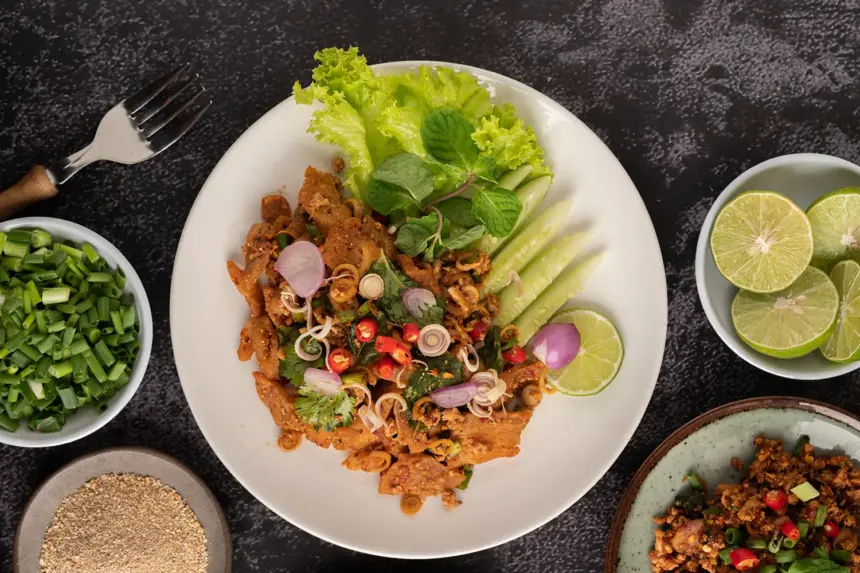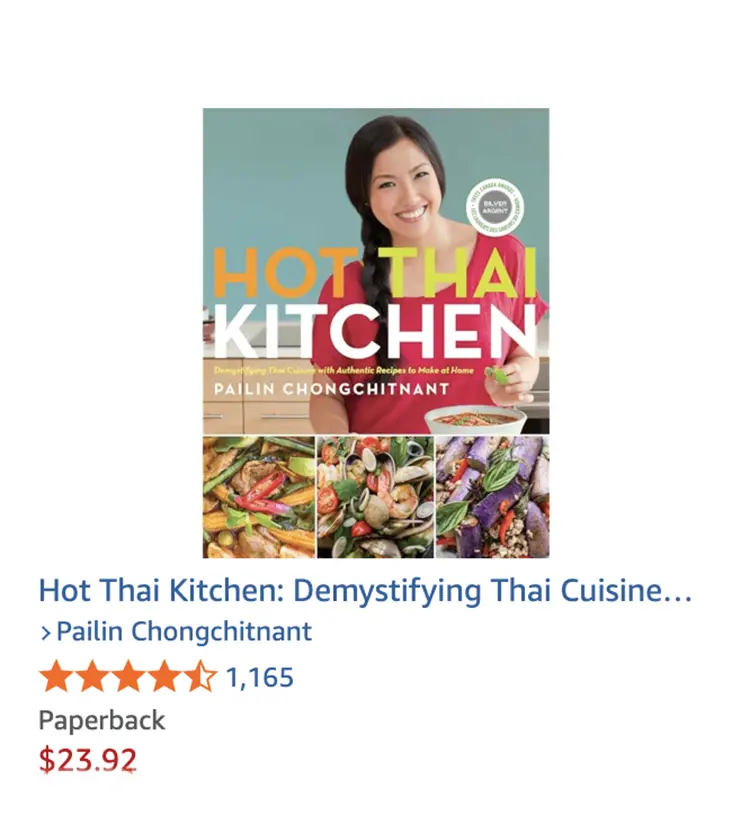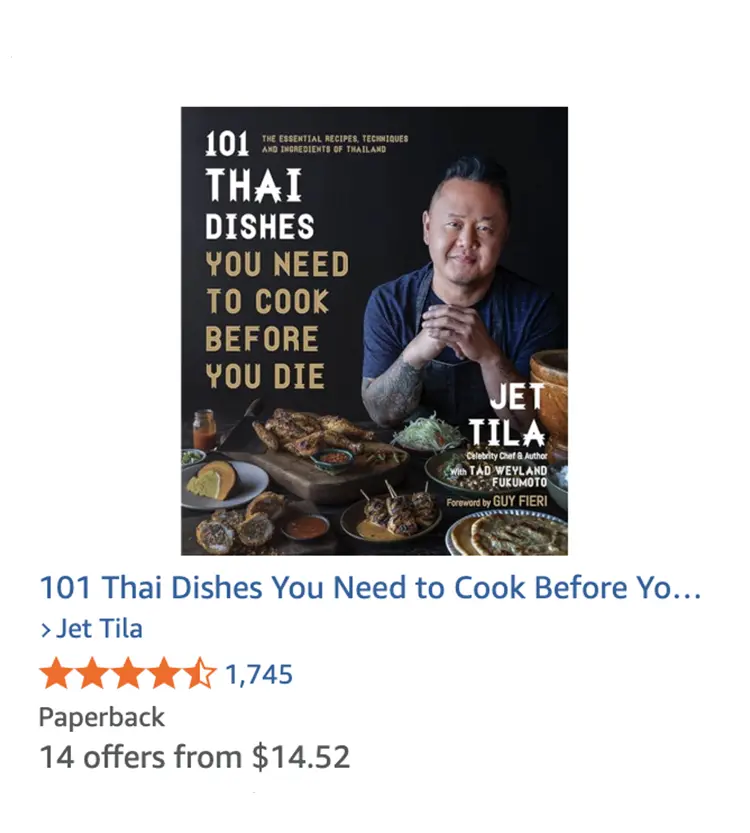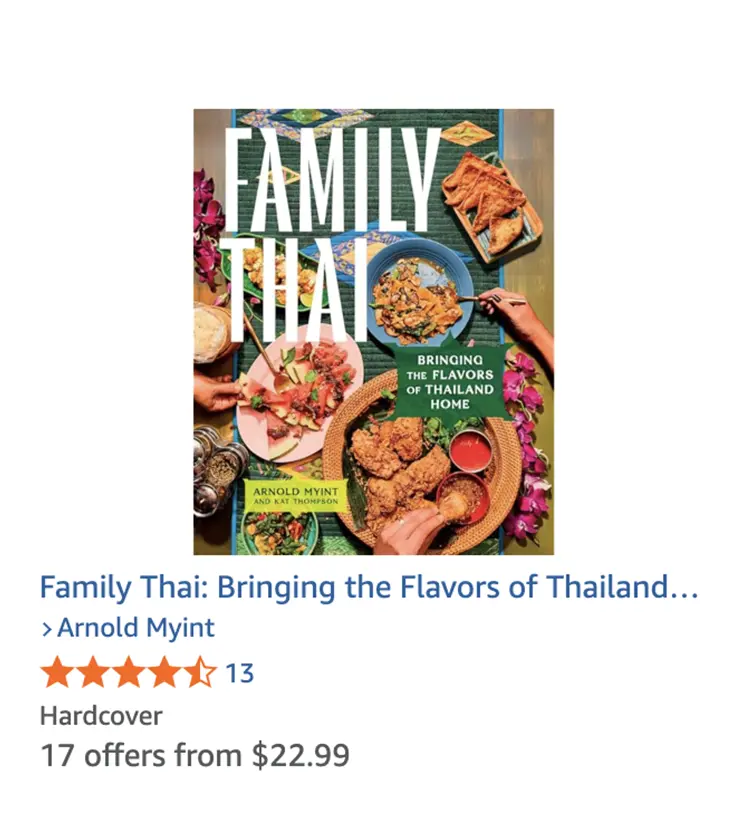Your Ultimate Foodie Adventure: 13 Must-Try Thai Dishes for First-Time Visitors
Welcome to Thailand, the land of smiles—and the land of truly unforgettable flavor! If you’re a first-time visitor, prepare your taste buds for a culinary awakening. Thai cuisine is world-famous for its perfect, exhilarating balance of the four fundamental tastes: sweet, sour, salty, and spicy. Every dish is a delicate balancing act, guaranteeing an explosion of flavor in every single bite.
- The Iconic 13: Your Essential Thai Food Checklist
- 1. Pad Thai: The Global Ambassador
- 2. Som Tum (Papaya Salad): The Spicy Punch
- 3. Tom Yum Soup: Thailand in a Bowl
- 4. Pad Kra Pao: The Everyday Legend
- 5. Massaman Curry: The Comforting Fusion
- 6. Khao Soi: The Northern Masterpiece
- 7. Panang Curry: The Thick and Nutty Choice
- 8. Tom Kha Gai: The Creamy Comfort
- 9. Thai Grilled Chicken (Kai Yang)
- 10. Thai Meat Skewers (Moo Ping & Gai Ping)
- 11. Mango Sticky Rice (Khao Niao Mamuang)
- 12. Thai Roti with Banana (Roti Gluay)
- 13. The 7-Eleven Toastie (Bonus Bite)
- Thai Food for First-Time Travelers: What to Know
- Final Thoughts: Your Culinary Adventure Awaits!
Walking through the streets of Bangkok or the night markets of Chiang Mai, the sensory experience is overwhelming in the best possible way: the sizzling sound of woks, the smoky aroma of grilled skewers, and the vibrant colors of curries and tropical fruit.
This isn’t just a list of dishes; it’s your personal roadmap to the iconic flavors that define Thailand. From street food legends to comforting regional specialties, we’ll guide you through the 13 essential meals you simply cannot miss on your first trip. Get ready to swap your fork for chopsticks (or a spoon!) and dive into the heart of Thai culture, one delicious bite at a time.
The Iconic 13: Your Essential Thai Food Checklist
These dishes are the pillars of Thai cuisine. They cover the full spectrum of flavor and technique, ensuring you get a complete taste of the country’s culinary genius.
1. Pad Thai: The Global Ambassador
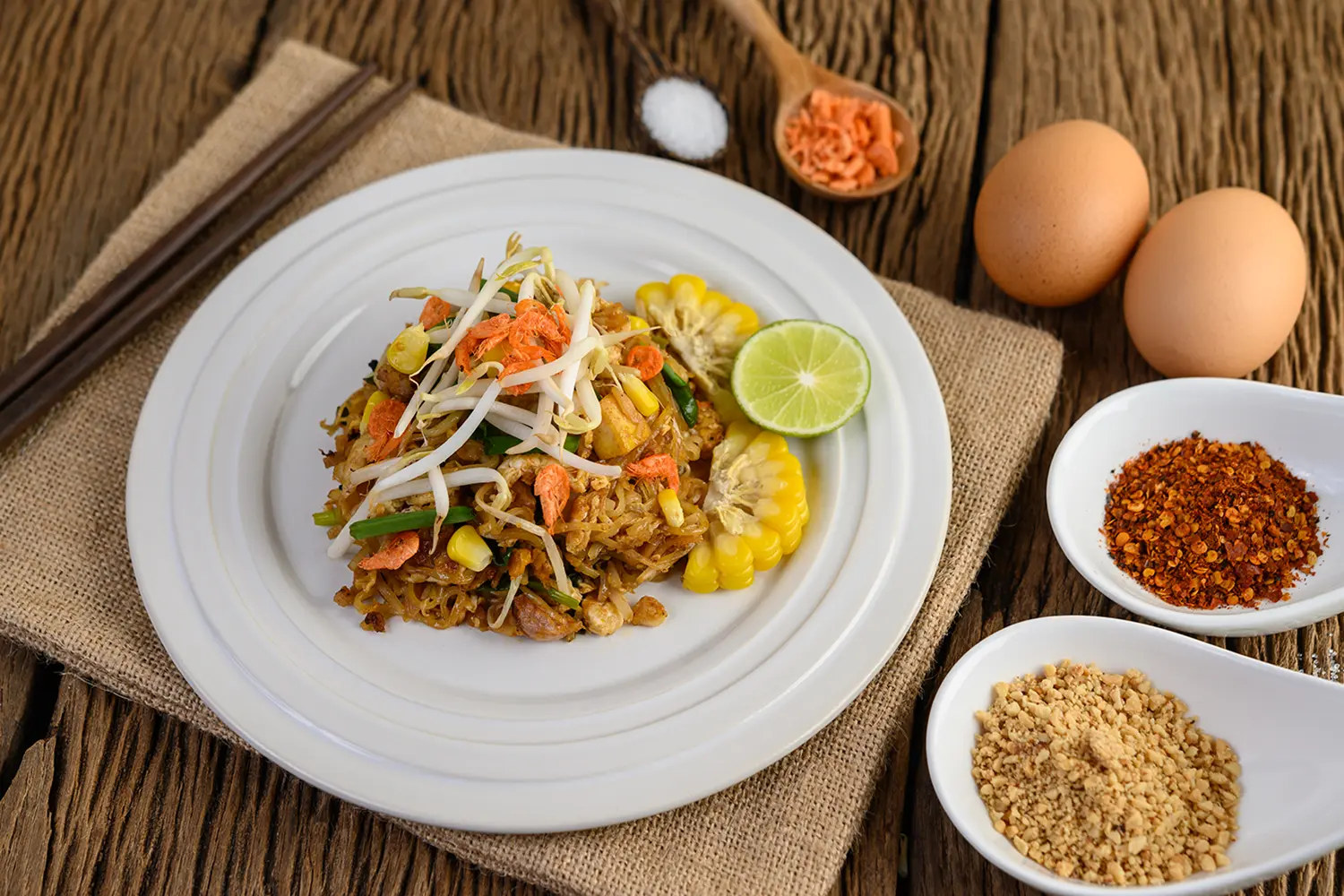
It’s impossible to talk about Thai food without starting here. Pad Thai is the country’s most famous dish, and for good reason. It’s the perfect entry point for any traveler, offering a mild, yet complex, profile of sweet, savory, and tangy flavors.
- The Flavor Profile: Thin rice noodles stir-fried in a rich tamarind sauce with egg, tofu, shrimp, peanuts, dried shrimp, and bean sprouts. The true magic lies in the subtle “wok hei”—the smoky char imparted by a fiercely hot wok that you simply can’t replicate at home.
- How to Order: Traditionally served with fresh prawns, but you can easily substitute chicken or ask for the vegetarian “Pad Thai Jay” (with tofu). You’ll always find a condiment tray on the side—use the chili flakes, sugar, and crushed peanuts to customize the flavor to your personal perfection.
- Where to Find It: Literally everywhere. Seek out busy street vendors for the freshest, smokiest version.
2. Som Tum (Papaya Salad): The Spicy Punch
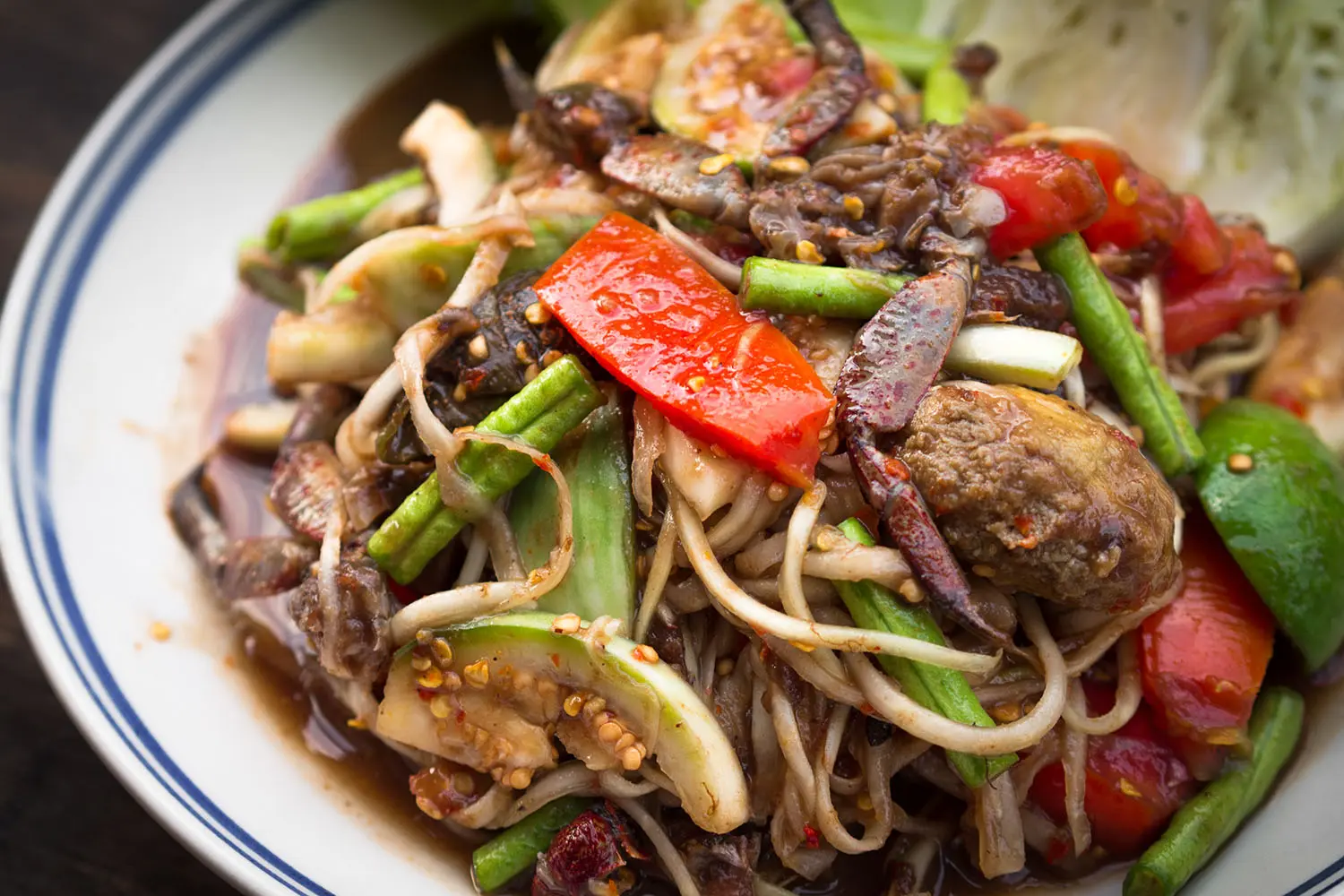
Don’t let the word “salad” fool you—Som Tum is an absolute explosion of fiery flavor and crunchy texture. Hailing from the Northeastern Isaan region, this dish is a culinary force to be reckoned with.
- The Flavor Profile: Shredded green (unripe) papaya is vigorously pounded in a mortar and pestle with lime juice, fish sauce, palm sugar, tomatoes, green beans, dried shrimp, garlic, and (crucially) a generous amount of fresh chili. It’s spicy, sour, salty, and crunchy all at once.
- How to Order: Warning: authentic Som Tum is intensely spicy. If you can handle the heat, dive in. If you’re new to the spice game, politely ask the vendor for “Mai Pet” (not spicy) or “Pet Nid Noi” (a little spicy).
- The Perfect Pairing: Som Tum is best enjoyed as part of the Isaan Trio, paired with Kai Yang (grilled chicken) and Khao Niao (sticky rice).
3. Tom Yum Soup: Thailand in a Bowl
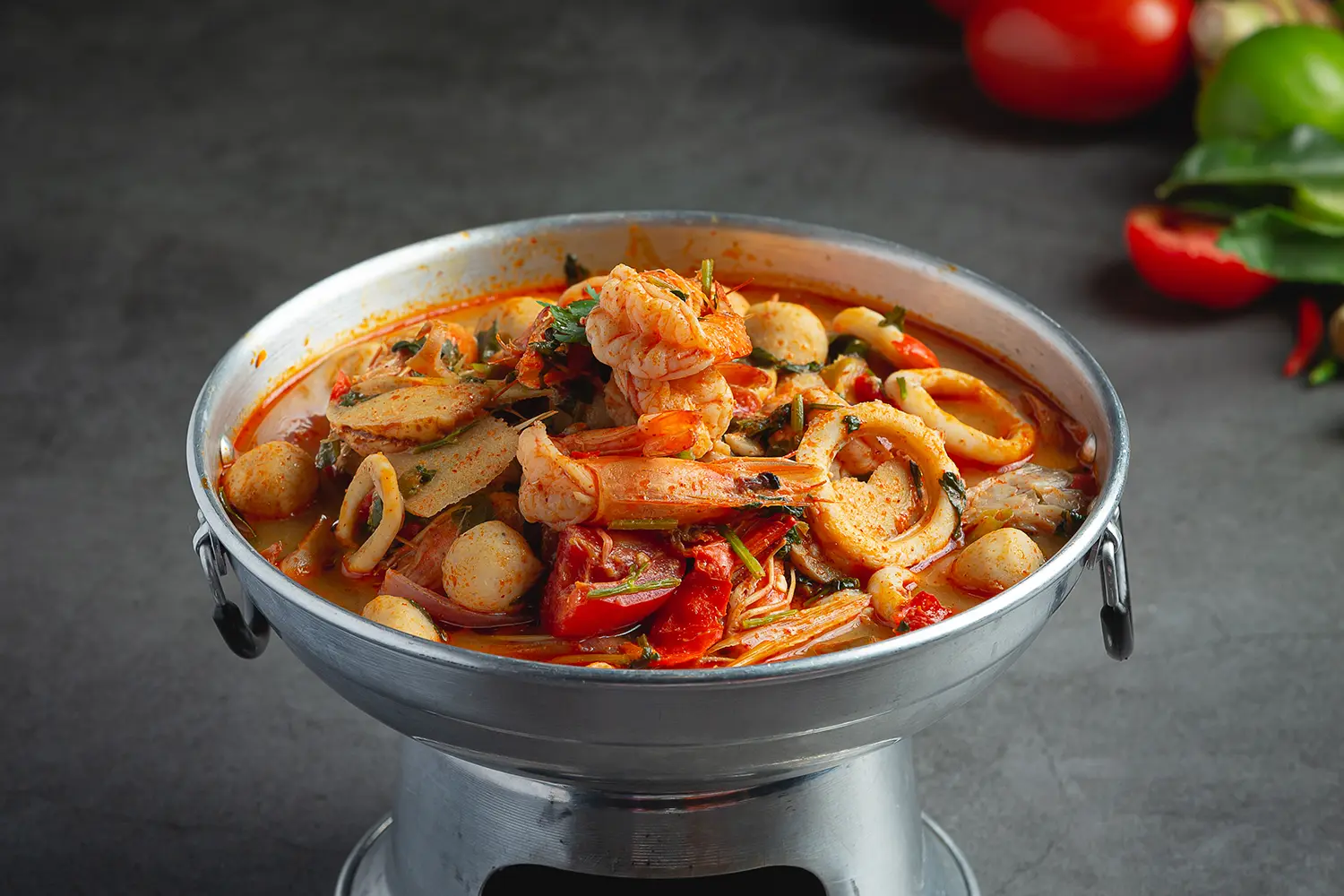
If one aroma defines Thailand, it is the fragrant citrus and chili kick of Tom Yum. This iconic hot and sour soup is a must-try for its unparalleled aromatic complexity.
- The Flavor Profile: The broth is infused with the holy trinity of Thai herbs: fragrant lemongrass, earthy galangal (ginger’s cousin), and zesty kaffir lime leaves. Add fish sauce, fresh chili paste, and lime juice for the signature punch.
- The Variations:
- Tom Yum Goong: The classic version, made with fresh river prawns.
- Tom Yum Nam Sai: The clear, light version—pure flavor, sharp and bright.
- Tom Yum Nam Khon: The creamy version, made richer with the addition of evaporated milk or coconut milk, which softens the chili heat.
- Where to Find It: Any Thai restaurant will serve it, but the best versions are found at sit-down shophouses and dedicated noodle stalls.
4. Pad Kra Pao: The Everyday Legend
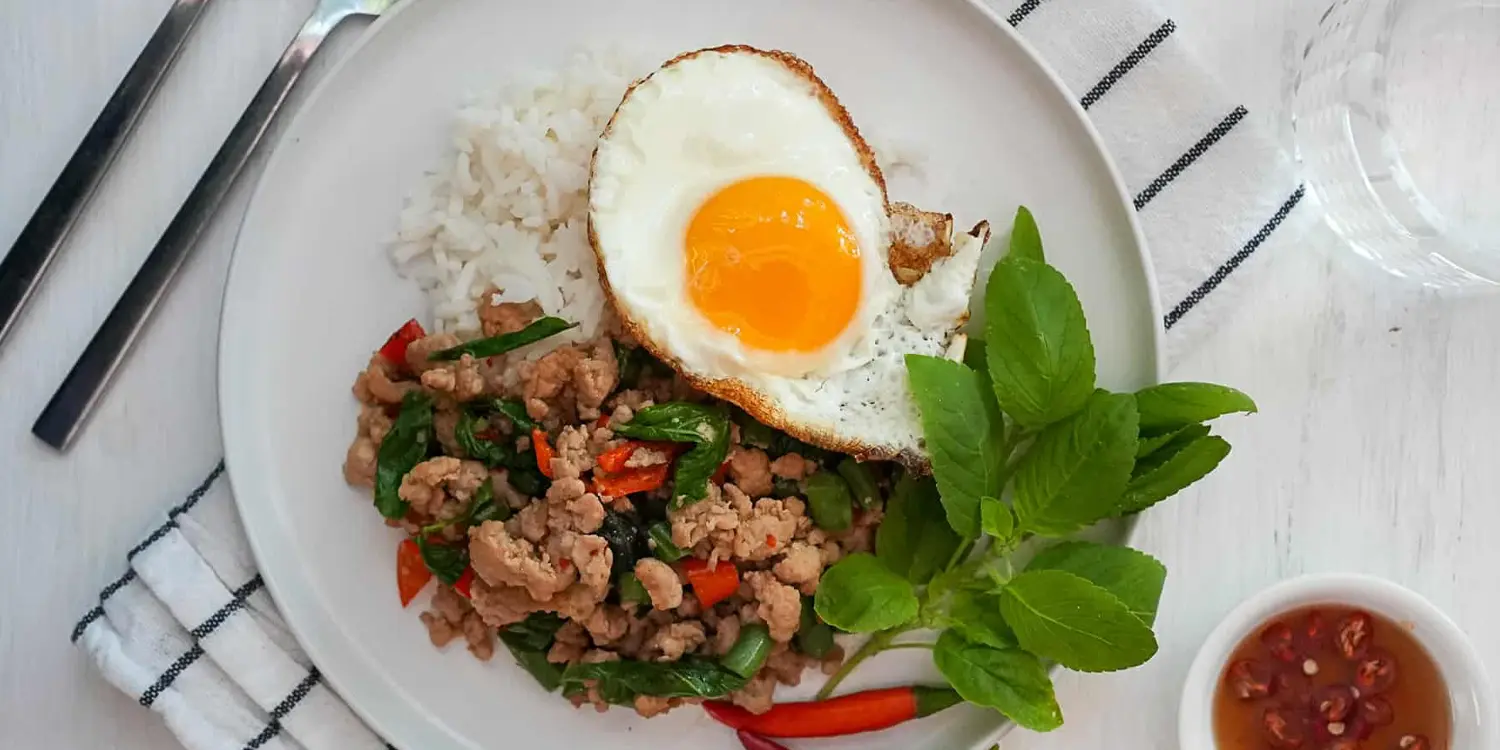
If a Thai person needs a fast, satisfying, and flavorful meal, they order Pad Kra Pao. This stir-fried dish is so beloved it’s often called the national comfort food.
- The Flavor Profile: Minced meat (usually pork or chicken) fiercely stir-fried with garlic, green beans, oyster sauce, fish sauce, and the star ingredient: Thai Holy Basil (Kra Pao). Holy Basil has a unique, almost peppery and medicinal aroma that is distinct from Western sweet basil.
- How to Order: Always ask for it “Rard Khao Khai Dao” (served over rice with a fried egg). Breaking the runny yolk over the spicy, savory stir-fry is non-negotiable!
- Spice Level: This dish is typically served spicy. If you want it mild, make sure to use your “Mai Pet” phrase!
5. Massaman Curry: The Comforting Fusion
Massaman Curry stands apart from its Thai curry cousins. Its flavor profile tells the story of trade routes and historical influences from the Malay Peninsula and Persia.
- The Flavor Profile: This is a rich, mild, and fragrant curry, not known for aggressive heat. It relies on warming spices like cinnamon, star anise, cardamom, and cloves. It’s simmered in coconut milk with meat (often beef or chicken), potatoes, and roasted peanuts.
- Why It’s a Must-Try: It’s a perfect entry point for anyone nervous about Thai spice. The creamy coconut milk and hint of sweetness make it incredibly comforting, yet the depth of the spices ensures it retains a sophisticated, exotic flavor.
- Serving: Always served with steamed Jasmine rice to soak up every last drop of the decadent sauce.
6. Khao Soi: The Northern Masterpiece
A trip to Northern Thailand—especially Chiang Mai or Chiang Rai—is incomplete without a bowl of Khao Soi. This Burmese-influenced curry noodle soup is rich, creamy, and complex.
- The Flavor Profile: A creamy, coconut-based yellow or red curry broth, served over soft egg noodles and topped with tender pieces of chicken or beef. The genius is the contrasting texture of a handful of crispy, deep-fried egg noodles placed right on top.
- The Sides: It’s served with essential condiments: chopped red shallots, pickled mustard greens, lime wedges, and chili oil for that final flavor tweak.
- Cultural Context: This dish is deeply regional. While you can find it in Bangkok, it’s best enjoyed in the North where it was perfected.
7. Panang Curry: The Thick and Nutty Choice
If you prefer your curry thick, rich, and slightly nutty, Panang Curry is your answer. It sits between the soupy texture of a Green Curry and the mildness of a Massaman.
- The Flavor Profile: A thicker, creamier red curry paste is slowly cooked with coconut cream and ground peanuts, giving it a deeper, nuttier flavor than standard red curry. It is typically finished with slices of kaffir lime leaves, which provide a beautiful, fragrant aroma.
- Why It’s Loved: It’s generally milder than Green Curry and its rich texture clings beautifully to the tender slices of meat (usually chicken or beef). It’s an instant crowd-pleaser.
8. Tom Kha Gai: The Creamy Comfort
If Tom Yum is the fiery sibling, Tom Kha Gai is the soothing, creamy cousin. This coconut milk soup is rich, fragrant, and far milder on the spice scale.
- The Flavor Profile: The base is a creamy coconut milk broth, infused with generous amounts of galangal (the star herb here, which gives it a slight piney, citrusy flavor), lemongrass, chicken, and mushrooms. The spice level is soft, making it incredibly comforting and approachable for first-timers.
- How to Eat: Remember that the pieces of lemongrass, galangal, and kaffir lime leaves are aromatics, not meant to be eaten whole—they are there only to flavor the broth!
9. Thai Grilled Chicken (Kai Yang)
Simple? Yes. Unforgettable? Absolutely. Kai Yang is the ultimate Thai street food chicken, especially when paired with sticky rice and Som Tum.
- The Flavor Profile: Whole chickens or large pieces are marinated for hours in a fragrant mix of garlic, white pepper, coriander root, and light soy sauce. They are then grilled low and slow over charcoal, which is key to achieving that signature smoky, crispy-skinned perfection.
- Where to Find It: Look for the vendors with the smoky grills in any night market. If you spot a vendor using charcoal, you’ve found the good stuff!
10. Thai Meat Skewers (Moo Ping & Gai Ping)
You can’t experience Thai street food without indulging in the famous meat skewers. They are cheap, fast, and the perfect walking snack.
- Moo Ping: Marinated grilled pork skewers. The pork is sliced thin and marinated in a mix of coconut milk, fish sauce, and palm sugar, giving it a deliciously sweet and savory caramelized crust.
- Gai Ping: Grilled chicken skewers, often with a light seasoning of soy and garlic.
- Insider Tip: Pair 3-4 skewers with a small plastic bag of Khao Niao (sticky rice) for the full local experience.
11. Mango Sticky Rice (Khao Niao Mamuang)
No trip to Thailand is complete without this legendary dessert. It’s the simple combination of textures and temperatures that makes it world-class.
- The Flavor Profile: Warm, slightly sweet sticky rice is cooked in rich, salted coconut milk, then topped with slices of perfectly ripe, sweet Thai mango and a final drizzle of extra coconut cream.
- The Experience: It’s best when the mango is fresh and perfectly ripe (usually available during the warmer months). It’s an irresistible blend of warm, sticky rice and cool, sweet fruit.
12. Thai Roti with Banana (Roti Gluay)
This delightful dessert is a staple at night markets and is pure indulgence.
- The Flavor Profile: A paper-thin dough is fried in butter until crispy and golden brown, then filled with slices of banana and quickly folded into a neat square. It’s finished with a generous drizzle of sweetened condensed milk or sometimes chocolate sauce.
- The Experience: Watch the vendor deftly flatten and fry the dough on a hot griddle—it’s a performance! It’s the perfect crunchy, sweet, warm treat to end your night.
13. The 7-Eleven Toastie (Bonus Bite)
Yes, seriously. While not a traditional Thai dish, the 7-Eleven Toastie is a cultural rite of passage for first-time visitors.
- The Flavor Profile: These simple grilled sandwiches, most famously the ham and cheese, are cheap, satisfying, and available 24/7.
- Cultural Context: In Thailand, 7-Eleven is a beloved institution. The staff will heat the toastie for you on a special grilling machine, creating a crunchy, perfectly melted bite that is the ultimate late-night snack when everything else is closed. Don’t knock it ’til you’ve tried it!
Thai Food for First-Time Travelers: What to Know
Navigating the vibrant Thai food scene can be daunting. Here are essential tips to make your culinary adventure smooth and safe.
Mastering the Condiment Tray
Thai dining is participatory. You are expected to adjust the flavor of your dish using the condiments found on every table (called Phuang Prik). Use them!
- Prik Nam Pla: Sliced chillies steeped in fish sauce—for saltiness and heat.
- Dried Chili Flakes (Prik Pon): Pure dried heat. Use sparingly!
- Sugar (Nam Tarn): For balancing sour and salty flavors.
- Chili Vinegar (Nam Som Prik Dong): Vinegar with chopped chillies—for sourness and a bit of heat.
The Spice Level Survival Guide
Don’t be afraid to order your food “Mai Pet” (not spicy). Street vendors and restaurants are generally happy to oblige.
| Request in English | Thai Phrase (Pronunciation) | Meaning |
| Not Spicy | Mai Pet (Mye Peht) | Please make it mild or non-spicy. |
| A Little Spicy | Pet Nid Noi (Peht Nid Noy) | Just a small amount of chili. |
| Regular Spicy | Pet Tamada (Peht Tah-mah-dah) | Standard heat level (often hot for foreigners). |
Street Food Safety: Your Quick Guide
Thai street food is delicious, authentic, and generally safe. Follow these two rules for peace of mind:
- Follow the Crowds: Choose stalls that have long lines or high turnover. High traffic means the food is constantly cooked and incredibly fresh.
- Look for Hot Food: Stick to food that is cooked fresh and served piping hot right in front of you (like stir-fries, noodle soups, or grilled skewers). Avoid food that has been sitting out for a long time.
Final Thoughts: Your Culinary Adventure Awaits!
Thai food is more than just a meal—it’s a crucial part of the travel experience. It’s the late-night sizzle of a wok, the smell of lemongrass after a rain shower, and the kindness of a vendor adjusting the spice just for you.
Come with an open mind, an empty stomach, and a spirit of curiosity. By diving into these 13 essential dishes, you won’t just be eating well—you’ll be connecting with the vibrant heart of Thailand. Enjoy your food adventure!


